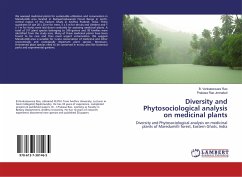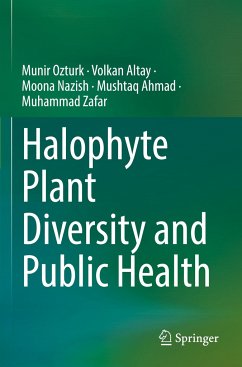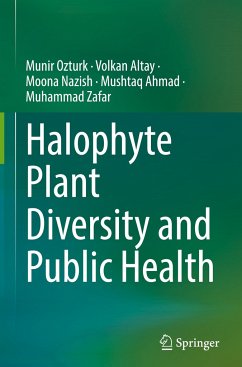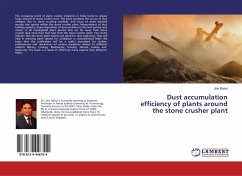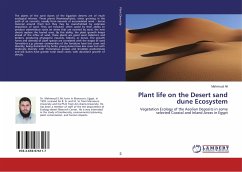
Plant life on the Desert sand dune Ecosystem
Vegetation Ecology of the Aeolian Deposits in some selected Coastal and Inland Areas in Egypt
Versandkostenfrei!
Versandfertig in 6-10 Tagen
43,99 €
inkl. MwSt.

PAYBACK Punkte
22 °P sammeln!
The plants of the sand dunes of the Egyptian deserts are of much ecological interest. These plants (Psammophytes), when growing in the path of air currents, usually form mounds of accumulated wind - borne material around them but they may be overwhelmed by extensive deposition of sand. They are however, often saved by their ability to produce adventitious roots on stems that are covered by sand, the new shoots replace the buried ones. By this ability, the plant growth keeps ahead of the influx of sand, these plants are good sand collectors and binders, producing phytogenic mounds, hillocks, or...
The plants of the sand dunes of the Egyptian deserts are of much ecological interest. These plants (Psammophytes), when growing in the path of air currents, usually form mounds of accumulated wind - borne material around them but they may be overwhelmed by extensive deposition of sand. They are however, often saved by their ability to produce adventitious roots on stems that are covered by sand, the new shoots replace the buried ones. By this ability, the plant growth keeps ahead of the influx of sand, these plants are good sand collectors and binders, producing phytogenic mounds, hillocks, or dunes. The growth forms and diversity of plant species are correlated with the stages of sand formations e.g: pioneer communities of the foredune have low cover and diversity, being dominated by herbs, young dunes have low cover but with moderate diversity with rhizomatous grasses and shrublets predominate and old dunes have greater total mean cover, with abundant growth of shrubs.




